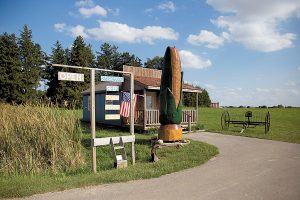March 29, 2019
The Work of Preparing an Animal for the Fair
 By John & Joan Maxwell
By John & Joan Maxwell
Cinnamon Ridge Farms
As we move into late spring, many 4-H and FFA youth are picking out which livestock born in the past few months they will be taking to fair. When choosing the animals for their projects, the youth have much to consider with their selection, including an animal’s size, conformation, and breed characteristics. After their selection is made, each student’s work has just begun! Much preparation goes into every selected animal before county fair. In beef and dairy projects, a lot of time is spent teaching the animal to lead. At the fair, the animal will need to walk nicely on the halter with its head up. By fair time, the animal may weigh more than four times that of the kid leading it! Starting the training when the animal is younger and smaller is vitally important.
While I was growing up, animals occasionally got big without undergoing leading training. Whether it was procrastination or just busyness as we got older, my brothers and I sometimes found ourselves a few weeks from the fair with a difficult-to-control animal or two. We had a few tried and true techniques to get them sorted out before the fair. First, we would tie the heifer to a sturdy post and keep an eye on her for a few hours. For awhile she would pull and pull against the post, but eventually she would learn to stand nicely without pulling. Next, we’d tie her (and other calves that were needing lessons) to a hayrack and while my brother would drive the tractor pulling the hayrack slowly, I’d walk alongside to make sure all the heifers were walking nicely. One year we were so short on time that we baled a few rounds of hay with the heifers walking behind the hayrack as I stacked the bales! It usually only took a few turns on the hayrack to have the animals show-ring ready.

Another method of teaching a large, stubborn animal to lead is to tie it to another large, stubborn animal – a donkey!! My brothers and I never tried this, but we had some friends with beef steers who found it very effective, and we loved to hear their stories. While beef steers aren’t known for being naturally docile, the donkey is very much the dominant of the two. He uses all sorts of techniques to help the steer learn to walk wherever the donkey wants to go. Biting, headbutting, kicking and pulling are all in the donkey’s arsenal. Within a day or two, the steer does whatever the donkey wants. To get his point across, when the donkey eats, the steer watches and when the donkey is done, then the steer eats. One rainy day a friend’s donkey was standing in the shed, and the steer was standing outside in the rain with the lead rope taut! The donkey seemed content to let the steer stand in the rain and continue to pull while the donkey stayed dry. Soon the steer gets the idea, never let the rope get tight, or something bad is going to happen. Once the steer is set free of the donkey, he still does not want that rope to get tight. So, anyone can lead the steer around without a problem. The steer will be ready for the fair.
Preparing an animal to be ready for the fair will make any youth work up an appetite. With spring in the air, the rest of us look forward to getting outdoors.
Warm up your grill because we have our delicious cheese and meats ready for all of your outdoor activities. You can find them at our farm self-serve store, located near Donahue.
Filed Under: Humor
Trackback URL: https://www.50pluslife.com/2019/03/29/the-work-of-preparing-an-animal-for-the-fair/trackback/


